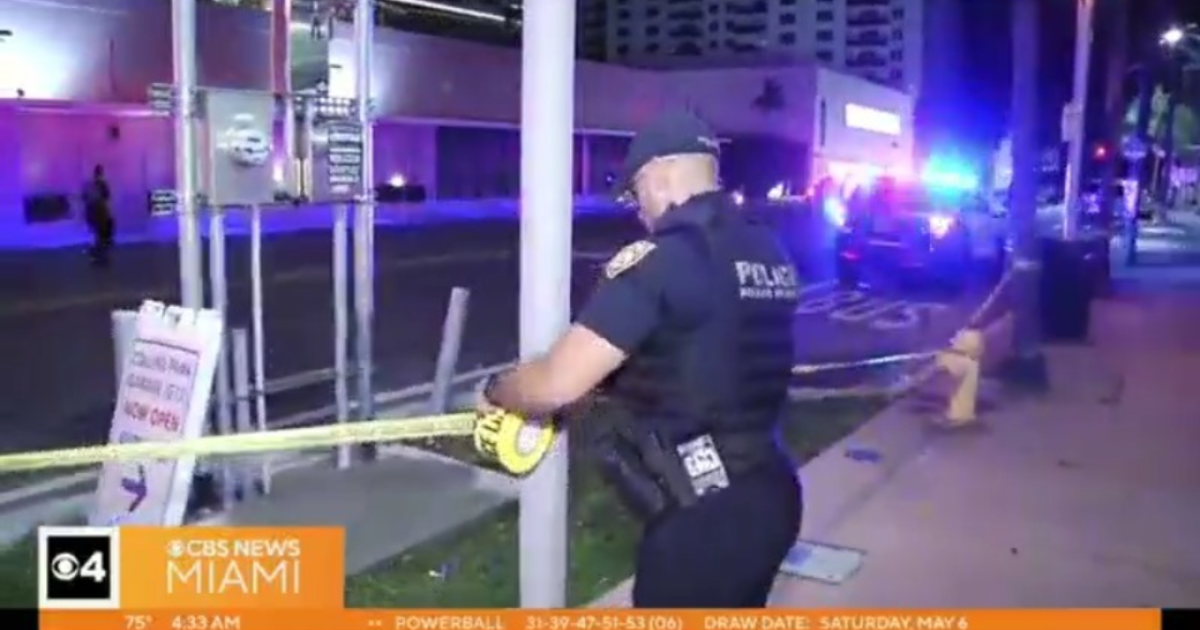Miami Proud: Lost Photos Dating Back To The Holocaust Reunited With Family Members
MIAMI (CBSMiami) - January 27 is International Holocaust Remembrance Day.
Of the six million Jewish people who were murdered, half of them were Polish.
In honoring the memory of these people, we have a special story of how a Miami teacher on a cleaning spree connected one man with a treasure trove of family photos, rare artifacts, dating to pre-World War II Poland.
It is a remarkable tale of lost and found.
David Semmel and Silvia Espinosa-Schrock have never ever met face to face - at least not in person.
The two could be detectives, working on unraveling a mystery.
Semmel is a retired investor from Indiana who's been researching his family tree for about 25 years now.
"I've been researching my family and my mother's side from the town of Przemysl, Poland when they left it was part of the Austro-Hungarian empire. Most of my family came over in the early part of the 20th century came to America and avoided the Holocaust," he said.
Espinosa-Shrock is an art history teacher at Miami Dade College, but thirty years ago she was a student in New York City when she acquired a box of black and white photos in the East Village.
Fast forward to 2020, like many she was doing some pandemic-inspired cleaning and rediscovered this curious collection.
She knew she had to find their rightful owner.
"My goal was to one day give this to the family because this was too precious for it to just disappear," Espinosa-Schrock said.
Determined, she poured through the many photos, and then went online searching a name on one photo - Muni Getter - and that is how she found David Semmel's blog, and there was the same photo, of Getter, who was Semmel's great aunt's husband.
She sent an email.
Semmel was elated.
His work had included researching the family history, which led to a visit to the town of Przemysl in 2003.
"Both of my mother's parents and their families are from there," Semmel said.
He started the blog and hasn't stopped.
He also runs a small foundation that takes care of the Jewish cemetery in Przemysl.
So Silvia immediately sent him scans of the photos.
"The first thing I saw was a picture of my mother when she was 16, and that got my attention as you can imagine in a big way," Semmel recalled.
Incredulous to have found the right person, she shipped him the whole box.
"I open the box and the first thing I saw was the book of matches from my parents' wedding, to think of the journey that matchbook had made!" he exclaimed.
Discovering what she had kept safe all these years, was a shock for Espinosa-Schrock.
"The added significance - that most of these people were murdered in the Holocaust - I didn't know that when I picked it up."
Each image adds detail and context to Semmel's relatives' lives.
"We only knew Aunt Chaya from a photo when she was 12. She wasn't real she was 'the aunt that was killed in the Holocaust'. Now, all of a sudden, she's a real person splashing in the lake at the beach, they're smiling, yelling at each other and all of a sudden she became real and that was a really just amazing," he said.
Both amazing and overwhelming.
"Some were so painful to look at family pictures of outings and picnics they were dated 1939 in Poland, and you just know that these people had a year or two left to live and that was it," Semmel said.
In the collection are rare images of imprisoned Jews in a French internment camp.
Semmel has donated the photos to the U.S. Holocaust Memorial Museum in Washington, DC, CLICK HERE where they will remain part of the permanent record.
Susan Goldstein Snyder, Curator for the National Institute for Holocaust Documentation, United States Holocaust Memorial Museum says the donation is especially important.
"David Semmel gave the U.S. Holocaust Memorial Museum unusual photographs of Beaune-la-Rolande, an internment camp for Parisian Jews with most of them deported to Auschwitz. The survival story of these photographs coupled with the fact that they were produced in a place that had extreme deprivation makes them extremely rare, but also gives a very humanizing face to those who either perished or were victims. As the survivor generation passes, the Museum's race against time to rescue the evidence - archives, documents, photographs, videos and artifacts - is vital."
And the impact of seeing these images is profound for Semmel, and future generations.
"They lived a life. They loved, had children, they played, they drank, they smoked, they did real human things. It is an important way to remember them, an important way to remember the holocaust."
MORE RESOURCES:
US Holocaust Memorial Museum
THE EMAIL SILVIA SENT TO DAVID:
Hello David, I have a box of many photos of who I believe is Muni Retter [Getter] Chayal, Florine Getter, and many other relatives. I found the box in around 1989 in Manhattan. Is muni's name actually Joachim Getter who later married Paulette Salomon? I have pictures I can send you so that you can identify them. I have had them since and forgot about them all this time, until tonight. I was going through them and began searching for Joachim Retter, the only name I could really make out. Please contact me so that I can send you pictures and perhaps you can identify them.
Ps. I have more than a hundred photos of them, of their families, his mother and Paulette his possible second wife. Do you know Paulette Salomon and her family?
Silvia Espinosa



